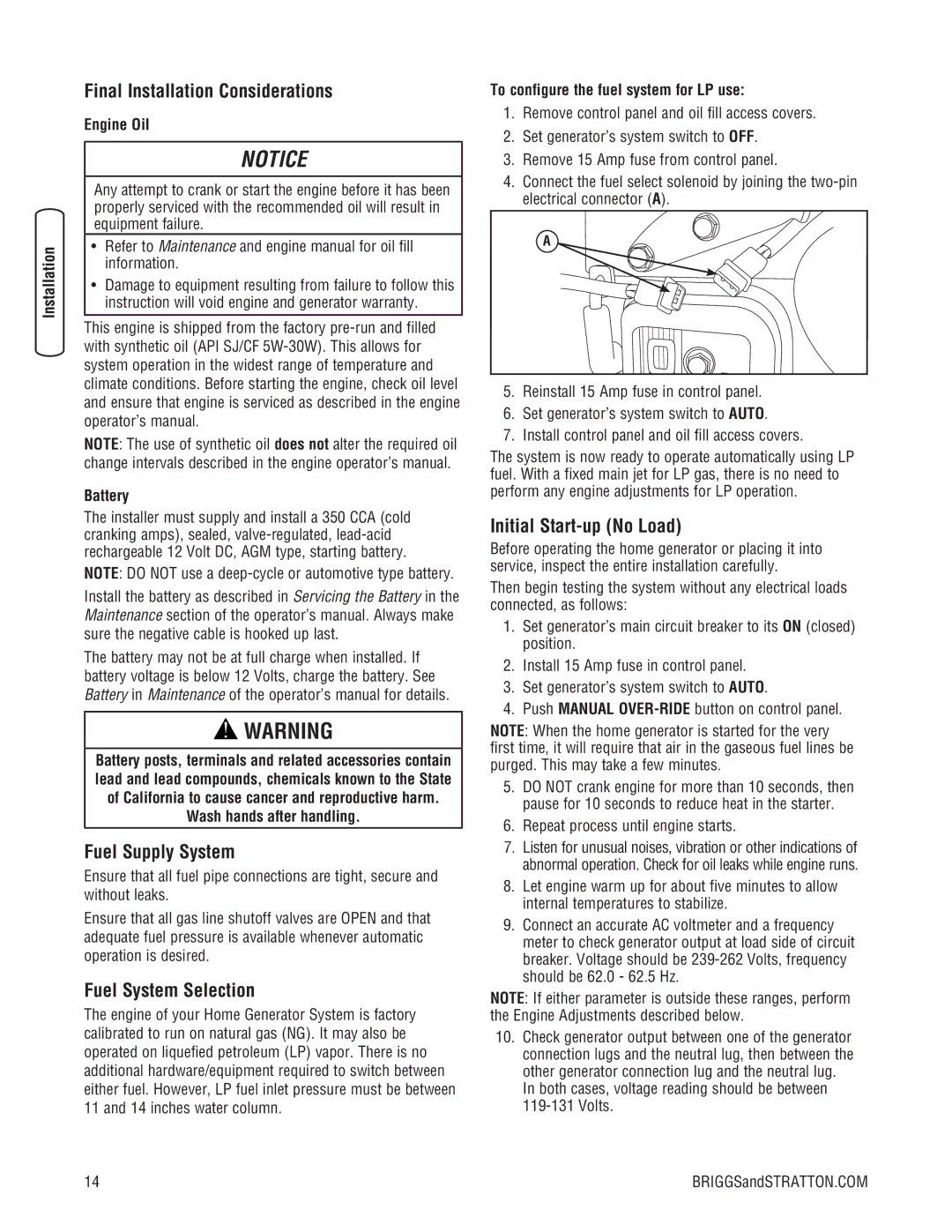10000 Watt specifications
Briggs & Stratton has long been synonymous with quality engines and power products, and their 10,000-watt generator continues to uphold that reputation. This robust generator is designed for both home and professional use, making it suitable for emergency backups and job site applications alike. Its impressive power output is one of its standout features, providing ample electricity to run essential appliances, tools, and electronics during outages or in remote locations.One of the primary features of the Briggs & Stratton 10,000-watt generator is its durable engine. The generator is equipped with a powerful 420cc OHV engine, which is designed for reliable performance under heavy loads. This engine is built to last, thanks to its rugged construction and reliable cooling system, ensuring optimal performance even during extended operating periods.
An essential characteristic of this generator is its impressive runtime. With a 7-gallon fuel tank, it can run for up to 9 hours at a 50% load, providing an extended period of power without the need for constant refueling. The inclusion of a fuel gauge allows users to check the fuel level easily, ensuring that they remain informed about fuel availability during usage.
The generator comes with an array of outlets, including multiple 120V household outlets, a 120/240V twist-lock outlet, and a USB port, enabling users to connect various devices simultaneously. This range of output options provides versatility for users who may need to power multiple appliances at once, whether it be during a blackout or at a job site.
In terms of technology, the Briggs & Stratton 10,000-watt generator features a self-diagnostic tool that monitors its performance and alerts the user to any potential issues before they become significant problems. This proactive approach to maintenance helps ensure that the generator remains in peak operating condition.
Another notable technology is the integrated idle control feature, which automatically adjusts the engine speed based on the load requirement. This not only improves fuel efficiency but also reduces noise levels, making it less obtrusive during use.
Additionally, the generator features a compact design with sturdy wheels for easy transport. Its durable frame is built to withstand rugged environments, while the folding handles make setup and storage convenient. Overall, the Briggs & Stratton 10,000-watt generator is an excellent choice for those seeking reliable power in various settings, combining strength, efficiency, and user-friendly features.

